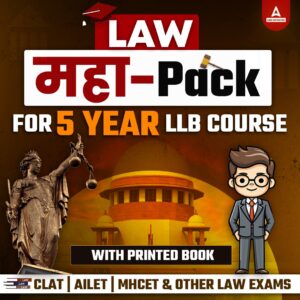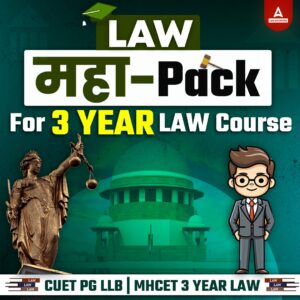The CLAT UG 2026 Exam will be held on 7 December 2026. This is the only exam that is accepted by the National Law University (NLU) for admission. Preparing for CLAT within 60 days sounds challenging, but it is a good time to boost your preparation regarding this exam for serious candidates. Here are only 60 days left until your exam. It’s time to practice more PYQs for better time management, important questions, and the difficulty level of the exam. Consistency, focus, and practice questions make a difference on the exam day. It makes you confident for your exam. Here we share the last 60 days of exam preparation strategies with you that will help you in your exam preparation.
How to Prepare for CLAT 2026 in 2 months
You can prepare yourself for CLAT 2026 within 2 months, but it requires more focus, discipline, and smart strategies. The key point is that the preparation focuses on high-weightage topics, and practicing regularly with mock tests and previous-year question papers.
- Syllabus Revision: You should revise according to the syllabus; it makes for effective preparation in your CLAT journey. Make a revision timetable, and focus on one subject per day for better revision.
- Get familiar with the exam pattern; you should practice with previous-year question papers and attempt countless mock tests for your high-rating preparation.
- Focus on Revision. Revision plays an important role in any exam, so you should focus more on revision. Focus on high-weightage topics, and practice reading comprehension and critical thinking. You should prepare short notes for quick revision.
- Practice CLAT past year papers; past year papers give you an idea about the exam pattern, frequently asked questions, and difficulty level of the exam. According to the exam pattern and difficulty level, you can prepare yourself for the CLAT 2026.
- Practice a mock test: Mock tests play a crucial role in every exam. Students must attempt a mock test every day. The mock test should be a full-length and sectional mock test. Attempt at least 1 full-length mock test every day, and after the test, analyze the mock test thoughtfully. Always focus on accuracy, not speed, and attempt the questions, because there is a -0.25 negative marking.
Check- CLAT Sample Paper 2026
Study Plan for CLAT 2026 Preparation
The CLAT 2026 exam requires focus, time management, and a well-structured study plan. A strong study plan requires consistent efforts and regular mock test practice. Here is a 60-day study plan.
- First 20 days: Concepts and section-based revision.
- Next 20 days: Full revision and review of daily current affairs.
- Last 20 days: Practice and analyze mock tests and PYQs.
- Section-wise Preparation for CLAT 2026
Here are section-wise strategies for your preparation.
Legal Reasoning
- Revise the principle and fact application style.
- Don’t mug up laws—understand how to apply legal principles to facts.
- Practice recent mocks and past CLAT questions.
- Quick revision of all legal topics, like criminal law, civil law, constitutional law, etc., using your notes.
Current Affairs and GK
Revise monthly current affairs (May 2025–Nov 2026).
Must focus on:
- Court judgment
- Government schemes, policies, and acts.
- Important international events, awards, sports, etc.
Don’t read new sources—revise your own notes.
English Language
- Revise reading comprehension strategies—skim, scan, and infer.
- Practice 2–3 reading comprehensions daily with time limits.
- Revise:
Tone & inference questions
Vocabulary in context, idioms, and phrases
Critical Reasoning
- Practice short logical reasoning passages.
Focus on assumptions, conclusions, and strengthening/weakening arguments
- Don’t fall into traps- always go back to what the passage says, not what you think. When questions are based on a passage, then personal views don’t matter. So be focused on the passage’s view
Quantitative Aptitudes
Focus on:
- Percentages, ratios, averages, profit & loss, and data interpretation.
- Revise formula and shortcut methods.
- Solve 2–3 data interpretation sets every other day.
Syllabus Of the CLAT 2026
The syllabus gives you direction regarding your preparation. It is the foundation of effective preparation, and you can prepare yourself smartly.
| Subject | Syllabus |
| English |
|
| Current Affairs | Contemporary events of significance from India and the world.
|
| Legal Reasoning |
|
| Logical Reasoning | Passage-based Question
|
| Quantitative Aptitudes |
|
Best Books For CLAT 2026 Exams
The right book can build your foundation, increase speed, and give you confidence. Before choosing any books for your preparation, we guide you to some books.
- Choose books that provide more examples and illustrations that help you solve case study-based questions.
- Books in the best category have very few errors, so choose books very smartly. And avoid learning incorrect information.
- Follow the latest edition of the book, which follows the latest trend of the exam, and also follow the latest syllabus.
- Choose the book that has a question bank at the end of the chapter or at the end of the book. This helps you with the conceptual clarity about the exam.
| Subject | Name of the books |
| English Books |
|
| General Knowledge & Current Affairs |
|
| Logical Reasoning Books |
|
| Legal Reasoning Books |
|
| Mathematical/Quantitative Aptitude |
|
CLAT 2026 Exam Pattern
The exam pattern gives you a clear idea about the exam; you can get an idea about the number of questions, the type of questions, the difficulty level, the frequently asked topics, and the questions.
| Particulars | Details |
| Exam | CLAT 2026 |
| Exam Conducting Body | Consortium of NLUs |
| Total Number of Questions | 120 |
| Types of questions | Multiple-choice questions |
| Maximum marks | 120 |
| Total Duration | 120 minutes |
| Mode of Exam | Offline (pen-paper mode) |
| Marking Scheme | +1 for the right answer
-0.25 for wrong answer No negative marks for an unattempted question |
CLAT Previous Year Question Papers
Students should practice with CLAT previous year questions, because PYQs are always helpful for students in making effective strategies. It gives you an idea of the types of questions and the level of questions.









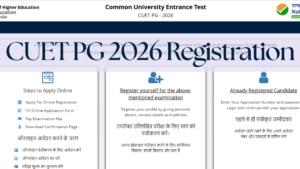 CUET PG 2026 Registration Form OUT at ex...
CUET PG 2026 Registration Form OUT at ex...
 AILET Result 2026 Release Date, How to D...
AILET Result 2026 Release Date, How to D...
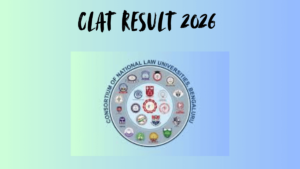 CLAT Result 2026 Out, Download Scorecard...
CLAT Result 2026 Out, Download Scorecard...
